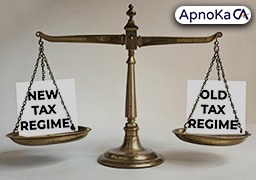# taxdeductions
12 posts in `taxdeductions` tag
.jpg)
CBDT Launches Self-Help Tool for Immediate Responses to Income Tax Bill 2025
To help taxpayers comprehend the proposed amendments in the Income Tax Bill 2025, the Central Board of Direct Taxes (CBDT) has introduced a cutting-edge Self-Help Tool. This online resource makes tax compliance simpler for both people and corporations by providing real-time updates, tax calculators, and streamlined legal explanations. Discover the main aspects of the Income Tax Bill 2025, as well as how to utilize this instrument and its advantages.

Tax Surcharges Uncovered: Detailed Insights into Old and New Regime Structures
This blog gives a thorough comparison of surcharge rates under India's old and new tax systems. Learn how these rates effect your tax burden and which regime is best for your specific financial position.
.jpg)
Old vs New Tax Regime in India: A Comprehensive Comparison
Understand the key differences between the Old and New Tax Regimes in India. This blog provides a detailed comparison of tax slabs, exemptions, deductions, and practical examples to help you decide which regime is better for your income level.
.jpg)
CBDT Extends Form 56F Filing Deadline for AY 2024-2025
The Central Board of Direct Taxes (CBDT) has extended the deadline for filing Form 56F for Assessment Year 2024-2025 to March 31, 2025. This extension provides relief to businesses operating in Special Economic Zones (SEZs) who face challenges in obtaining the required accountant's report. Learn about the reasons behind the extension, its implications, and how it benefits taxpayers.
.jpg)
Old vs. New Tax Regime: Which Option Suits You Best for FY 2025-26?
The Indian tax system offers two regimes—old and new—each with distinct slab rates, deductions, and exemptions. This blog compares both regimes, using examples to help you decide which one suits you best for FY 2025-26. Learn how to minimize your tax liability based on your income and investments.
.jpg)
Choosing Between the Old and New Tax Regimes: A Guide for FY 2025–26
The Old Tax Regime and the New Tax Regime are the two tax regimes that India offers to people. This document highlights the benefits, drawbacks, and tax computations for FY 2025–2026 of both regimes. Find out which regime is most appropriate for your financial status and income.
.jpg)
Save More, Pay Less: Essential Income Tax Deductions for Salaried Individuals
Under the Income Tax Act of 1961, salaried people in India are eligible to claim a number of deductions that lower their taxable income. Standard Deduction, HRA, LTA, Section 80C, NPS, Home Loan Interest, Health Insurance, and more are examples of these deductions. Taxpayers can reduce their tax burden and optimize their savings by being aware of these provisions.
.jpg)
India’s Income Tax Slabs for FY 2023-24, 2024-25, and 2025-26 – New Tax Regime
An outline of the most recent income tax slabs for FY 2023–2024; FY 2024–2025; and FY 2025–2026 under the new tax system is given in this blog. Taxpayers need to carefully consider their alternatives in light of the updated tax rates and higher exemption ceilings. Myitronline makes tax preparation easier while guaranteeing accuracy and the most possible savings.
.jpg)
Save Taxes Effectively: How to Pay Zero Tax on 12 Lakh Income
This blog provides a step-by-step strategy for persons earning 12 lakh annually to legally pay zero income tax. It investigates significant deductions and exemptions under several parts of the Income Tax Act, such as parts 80C, 80D, HRA, and NPS, and provides practical examples to aid comprehension.
.jpg)
Budget 2025 Highlights: New Tax Relief Measures for Senior Citizens
The 2025 Budget is expected to bring transformative tax benefits for senior citizens, increasing the exemption limit to ₹5 lakh and introducing zero tax liability on income up to ₹10 lakh under the old tax regime. These changes aim to enhance financial stability, encourage savings, and simplify tax compliance for senior citizens.
.jpg)
Understanding Form 12BAA: Essential Tips for Salaried Individuals
Form 12BAA was created by the Income Tax Department to simplify salary tax deductions. In order to ensure correct TDS deductions and improved tax planning, this handbook assists salaried staff in understanding its goal, essential components, and use.
.png)
The Income Tax Act's Section 35AB: A Comprehensive Guide for Businesses
This blog post provides a detailed guide to Section 35AB of the Income Tax Act, which offers tax deductions for capital expenditures on acquiring know-how. It covers the benefits, requirements, and advantages of this provision, making it a valuable resource for businesses looking to invest in innovation and growth.
